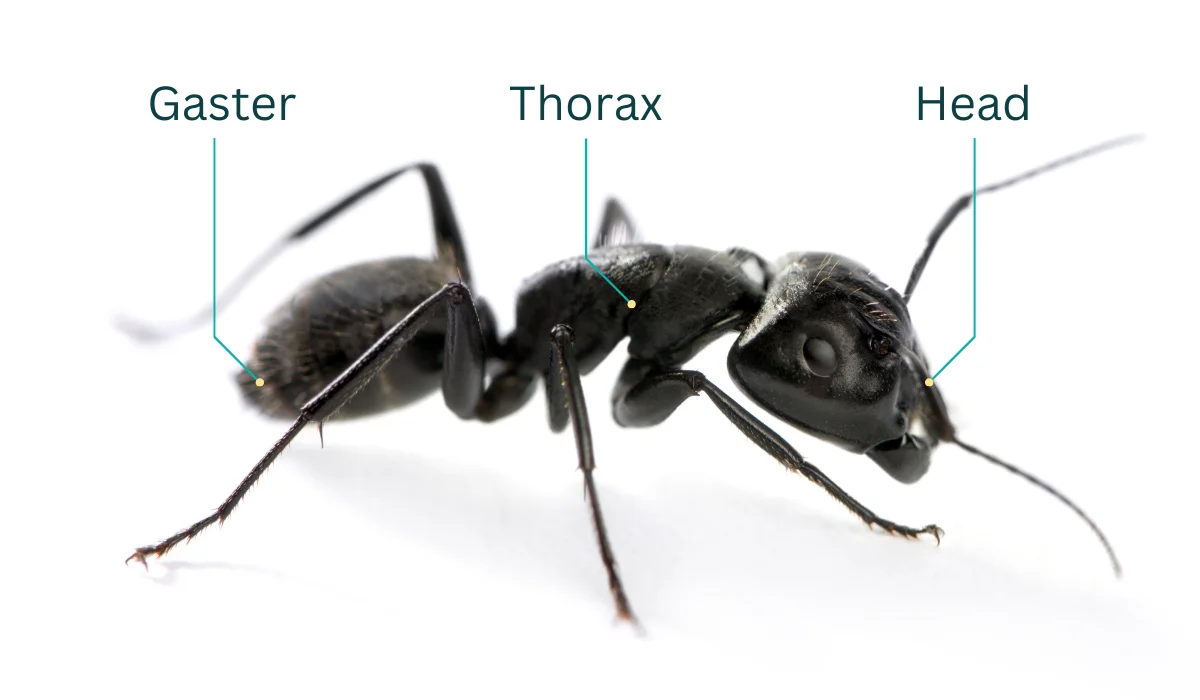Carpenter Ants in Florida: Identification, Treatment, & Prevention
Florida carpenter ants are a common nuisance for homeowners, especially in humid areas where they thrive. Understanding their behavior, how to spot an infestation, and effective ways to manage them can help protect your home from damage.
In this article, we’ll cover everything you need to know about identifying carpenter ants, addressing infestations, and preventing them from becoming a problem.
Key Takeaways
- Florida carpenter ants are large ants with red and black bodies that nest in moist, decayed wood and leave sawdust behind.
- These ants often invade homes for food and moisture, and their nests can damage wooden structures.
- Common signs of infestation include small piles of sawdust, rustling noises in walls, and winged ants.
- Professional pest control is helpful if home treatments do not work, as experts can offer specific solutions.
How to Identify Carpenter Ants in Florida
Florida carpenter ants are among the largest ant species in the region. To help recognize these pests, here are the key characteristics and habits that set them apart.
Physical Characteristics

Carpenter ants in Florida have a distinguishing mix of red and black colors. Their bodies are divided into three segments: the head, thorax, and gaster.
These ants can grow up to half an inch in length, making them noticeably larger than many other ant species. Their long, bent antennae are a notable feature, helping them navigate their surroundings.
Nesting Habits
These large, black carpenter ants, especially in South Florida, are unique in their nesting behaviors. They prefer moist, decayed wood inside trees, wooden structures, or insulation.
These ants only hollow wood out to create primary and satellite nests, leaving behind tiny piles of sawdust. This behavior distinguishes them from termites, who consume the wood.
Diet and Habitat
The diet of a Florida carpenter ant includes proteins and sugars, typical of ant species. They are commonly drawn to sweet substances, which they seek out in places where food is stored or prepared.
Their habitats extend beyond natural forests, adapting to urban areas where moisture and food are accessible. They can invade attics and crawl spaces. They build extensive ant colonies, putting structures at risk.
Signs of Carpenter Ant Infestations
Carpenter ant infestations can be tricky to identify at first. As homeowners, the first sign you might notice is ant workers foraging for food sources, mostly at night.
If you think you might have a carpenter ant infestation, here are some of the signs to look out for:
Signs | How to Spot |
Sounds in Walls | Listen for rustling noises in wall voids. |
Sawdust Trails | Find small piles of sawdust near wood areas. |
Presence of Winged Ants | Notice swarmers or alates, mostly in warmer months. |
Damaged Wood | Inspect the wood for smooth or hollowed sections. |
Dead Insects | Look for dead ants or insects around windows. |
Visible Adult Ants | Spot ants foraging in kitchens at night. |
How to Treat Carpenter Ant Infestations
To treat and manage carpenter ant infestations, it's important to take a comprehensive approach. Here are some steps to ant control to follow before they compromise your home’s structural integrity:
- Place baits around structures where ants are commonly seen to get rid of old and new colonies from within.
- Manage natural food sources like crickets and mealybugs that they rely on by controlling their populations.
- Clear indoor food sources and reduce moisture to discourage carpenter ant nests in your home.
- Observe colony growth to detect reproductive ants and address potential expansion early.
- Contact a pest control service regularly for professional inspections and tailored treatment solutions.
How to Prevent Carpenter Ants in Florida Homes
To keep carpenter ants from invading your home, it’s essential to take a proactive approach. As homeowners in Florida, here are some preventive measures that can help protect your property:
- Inspect wooden structures and support pillars regularly for signs of moisture or decay.
- Repair any damaged or rotting wood promptly to remove potential nesting sites for adults and larvae.
- Seal cracks and crevices in your home's exterior, paying close attention to gaps around windows and doors.
- Trim trees and shrubs in contact with your home to prevent ants from using them as bridges.
- Reduce sweet substances like honeydew sources by controlling aphids and other sap-feeding insects.
- Remove stumps, decaying wood, and other debris from your home's surrounding area.
- Ventilate attics and crawl spaces to keep them dry, reducing the attraction of damp wood.
- Hire a professional pest control service to assess and treat potential infestations effectively.
When to Call in the Professionals
If you've attempted DIY methods or homemade treatments without success, it's wise to consult carpenter ant experts.
Professional pest control companies (like us at Native Pest Management) can offer a thorough inspection and provide guidance tailored to your situation. We can assess the extent of the infestation and recommend the best course of action.
Don't wait for a small problem to become overwhelming. Stay on top of the issue by seeking our help early on.
